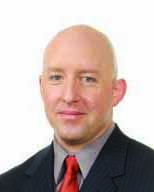Managing needs of four-generation workforce challenging

Mark Riley
By Mark Riley
A seismic shift is underway in today’s workplace. Two massive generations — the Baby Boomers and the millennials — with two very different sets of needs and expectations are testing the abilities of even the most adroit human resources department. This is true along the Central Coast, the rest of California and across the country.
Never mind for a moment the other two generations sandwiched in between — including post-Boomers and Generation X. For HR managers and the chief financial officers who must decide how companies are going to source talent, managing the four-generation workforce presents new and challenging issues.
First, a look at how the original Baby Boomers, born between 1946 and 1964, differ from any generation that came before them.
Now more seniors in America are working compared to any time since the turn of the century.
According to a recent Pew Research Center study, almost 20 percent of Americans aged 65 and over, around 9 million people, characterize themselves as being full-time or part-time employees. In 2000, that number was less than 13 percent.
Put simply, Boomers are rewriting the rules of retirement. In a recent Bank of America Merrill Lynch retirement study, 72 percent of pre-retirees, age 50 plus, say their ideal retirement includes work in some capacity. They remain on the job for a variety of reasons, both financial and personal.
For Boomers, playing it safe means managing down their income and taking Social Security at a later date. For employers of Boomers, it means addressing the unique needs of people in these later stages of life.
Meanwhile, pushing up from below is another massive generation, now officially America’s largest living generation. The millennials, young adults who came of age around the year 2000, have also just surpassed Gen Xers as the largest generation in the US. labor force.
Nationwide, demand for skilled workers is surpassing even the need for traditional capital. Investing in employees is fast becoming an essential growth strategy for companies both locally and globally.
Offering robust benefits tailored to your employees’ needs and preferences, at any age, can help you build a stronger workforce and gain a lasting competitive edge.
The four-generation workforce is a unique demographic phenomenon — with two massive generations at opposite ends of the age spectrum — but it signals important changes to come for companies looking to attract, support and retain the very best talent.
What’s clear for the HR manager and the CFO: they are dealing with four very different generations born between 1946 and 2004 who are experiencing a wide range of financial challenges. From paying down student debt and purchasing their first home, to supporting aging parents and easing into retirement, HR teams must broaden the conversation they’re having with their employees to encompass financial matters well beyond simply encouraging people to take advantage of their 401(k).
The trend is clear. Today, employees look to their employers for help in becoming more financially fit, and employers understand this need and overwhelming agree that they have an important role to play.
Employers looking to rethink and expand their benefits offerings for a multi-generational workforce are starting to look at benefits holistically, as part of a complete package, rather than in silos.
CFOs also continue to view health care costs as the top business threat to expansion.
This points to one of the most critical challenges in the four-generation workforce — taming health care expenses, while balancing the need to grow and maintain a competitive workforce.
As a first step, CFOs and their HR teams must make the most of every opportunity for cost savings and efficiencies.
Heath Savings Accounts are one answer. Companies can consolidate HSAs with other plans to gain efficiencies, and employees can save for both short- and long-term medical costs.
For companies that can get the benefits mix right, there appears to be a positive business climate ahead.
There is a broad acknowledgement among CFOs that more must be done to attract, support and retain their very best employees — whether they’re 22 or 62.
• Mark Riley is a senior vice president and the local market executive for Bank of America Merrill Lynch.











